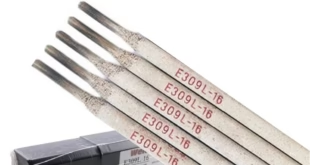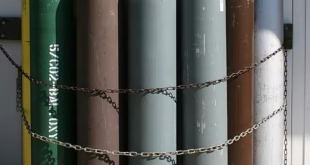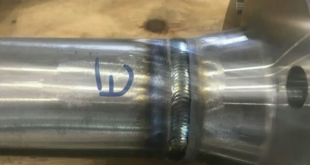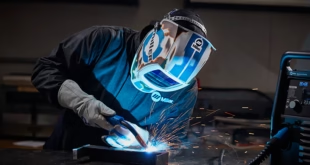Weld Preparation and Bevel Angle
Welds don’t just happen—they’re engineered. One of the most overlooked yet crucial aspects of welding is proper weld preparation, and at the heart of this preparation lies the bevel angle. From structural bridges to pressure vessels and pipelines, the quality of a weld depends greatly on how well the joint was prepared before striking an arc. This article explores every inch of this process—from bevel geometry to practical tips and standards—so you can ensure your welds hold strong.
Importance of Proper Weld Preparation
Before a welder even thinks about arc stability or travel speed, the surface and geometry of the joint must be ready. Weld preparation refers to the series of tasks—like cutting, cleaning, and beveling—done to ensure the weld joint is suitable for sound fusion. Without proper prep, the risk of defects like lack of fusion, porosity, and excessive spatter skyrockets.
Effects of Poor Preparation on Weld Quality
Neglecting proper preparation can lead to undercutting, lack of penetration, excessive weld metal usage, or even complete joint failure. Dirty surfaces, incorrect bevel angles, or poor fit-ups act like sabotage beneath the surface—hidden until it’s too late.

Understanding Beveling in Welding
What is Beveling?
Beveling involves cutting an angled edge (usually between 30° and 45°) into the edge of a workpiece before welding. This allows the weld to penetrate deeply, promoting fusion throughout the thickness of the metal. It’s especially vital in thicker materials, where welding straight across square edges would result in weak joints.
Role of Beveling in Welding Groove Design
Beveling plays a key role in groove welds, helping form configurations like the V-groove, U-groove, and J-groove. These shapes ensure proper weld fill, access for the electrode or wire, and room for thermal expansion.
Types of Joint Preparations in Welding
Square Butt Joint Preparation
Used for thinner materials, square butt joints don’t need beveling. However, precise alignment and edge cleaning are still vital to avoid cold laps or inclusions.
Single-V and Double-V Groove Preparation
These are among the most common bevel configurations.
Single-V is easier and cheaper but can lead to distortion in thicker sections.
Double-V helps balance shrinkage and reduce filler metal usage.
U-Groove and J-Groove Preparations
More complex but efficient, U and J grooves minimize weld metal volume while allowing deep penetration. They’re often used in pressure vessel and pipe welding, where joint efficiency is critical.
Standard Bevel Angles and Their Applications
Common Bevel Angle Ranges (30°–45°)
Most bevels fall between 30° and 45°, with 37.5° being a commonly recommended angle in many codes and procedures. This allows enough access for the electrode, good weld pool control, and proper fusion without wasting filler.
Factors Influencing Bevel Angle Selection
Material Thickness and Type
Thicker materials demand deeper penetration, which often requires a larger groove angle. Softer materials like aluminum might need a different bevel approach than carbon steel.
Welding Process Used (SMAW, GMAW, GTAW, FCAW)
Each welding process has different penetration capabilities. For example:
GMAW may not need as wide a bevel as SMAW for the same thickness.
TIG (GTAW) welders prefer tighter bevels due to its precise arc.
Desired Penetration and Weld Strength
Design requirements determine whether full or partial penetration is necessary. Bevel angle plays a direct role in achieving the right level of mechanical strength.
Methods of Beveling for Weld Preparation
Manual Grinding and Oxy-Fuel Cutting
This method is accessible and affordable. However, manual methods often lack consistency and may require grinding to refine the bevel.
Plasma Cutting and CNC Machining
These offer precision and repeatability. Plasma cuts cleanly through ferrous and non-ferrous metals, while CNC routers and mills are ideal for U or J groove profiles.
Milling and Mechanical Beveling Tools
Beveling machines with rotating cutters provide excellent surface finishes and uniform angles. They’re ideal for production environments with repetitive joint types.
Best Practices in Weld Joint Preparation
Cleaning and Degreasing
Remove rust, paint, oil, and scale before beveling or welding. Contaminants can create porosity or inclusions, weakening the weld.
Accurate Fit-Up and Tolerances
A poor fit-up—whether too tight or too wide—can lead to improper root openings and inconsistent fusion. Fit-up tools like gap rods or adjustable clamps help maintain control.
Preheating Considerations (if required)
Some materials like high-carbon steels require preheating to reduce thermal shock and prevent cracking. Preheat temperatures should be outlined in the WPS.
Bevel Angle and Its Impact
Influence on Penetration and Fusion
The correct bevel angle ensures full penetration, especially for structural and pressure-critical welds. Too small an angle may restrict access and cause fusion issues, while too wide wastes filler.
Effect on Heat Input and Distortion
A larger groove angle increases the volume of weld metal needed, leading to more heat input. This can cause greater thermal distortion and residual stress unless controlled.
Cost and Time Considerations
Wider bevels mean more filler, more passes, more time. An optimized bevel angle reduces costs while maintaining weld integrity.
WPS and Bevel Angles
How WPS Dictates Joint Preparation
The WPS details bevel angles, root gaps, backing requirements, and joint cleanliness. Welders must follow it exactly to ensure the weld meets code.
Compliance with ASME and AWS Standards
Standards like ASME Section IX, AWS D1.1, and others provide specific bevel angle recommendations based on material and process. Following these ensures safety and code compliance.
Common Mistakes in Beveling
Incorrect Angle or Inconsistent Bevels
Inconsistent bevels across a joint create fit-up issues, affect weld bead consistency, and may lead to code violations during inspection.
Over-Beveling and Material Wastage
A common error is making the bevel too wide, requiring excessive weld metal and increasing heat input. This also increases costs and may reduce productivity.
Inadequate Edge Cleaning Before Welding
Even a perfect bevel fails if the edges are contaminated. Always clean beveled edges thoroughly to avoid weld defects.
FAQs
What is the ideal bevel angle for a 1-inch thick plate?
Typically, a 37.5° bevel angle per side (75° included angle) is used for full-penetration groove welds on 1-inch thick plate.
Can I weld thick metal without beveling?
Not recommended. Without beveling, welds often lack full penetration, compromising strength—especially on sections thicker than 3/16”.
What’s the difference between single-V and double-V joints?
A single-V has a bevel on one side only, while a double-V is beveled on both sides. Double-V joints balance shrinkage and reduce weld metal needed for thick materials.
Why is edge cleaning so important in joint prep?
Contaminants like oil, rust, and paint can cause porosity, slag inclusions, and poor fusion. Clean edges ensure defect-free, strong welds.
Does bevel angle change with different welding processes?
Yes. Processes like GTAW (TIG) or GMAW (MIG) may require tighter or wider groove angles depending on arc accessibility and penetration ability.
Conclusion
Weld preparation—and particularly bevel angle selection—is not just a preliminary step. It’s foundational. Like sharpening a blade before the cut, beveling prepares the metal for strong, clean fusion. A well-prepped joint minimizes defects, enhances penetration, and ensures every weld meets the highest standards of strength and integrity. Whether you’re working on structural steel or pressure piping, investing time and precision into proper preparation will always pay off in quality, safety, and performance.
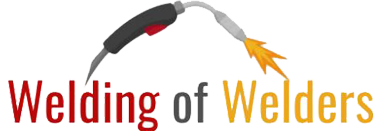 Welding of Welders All about Welding and Welders
Welding of Welders All about Welding and Welders
